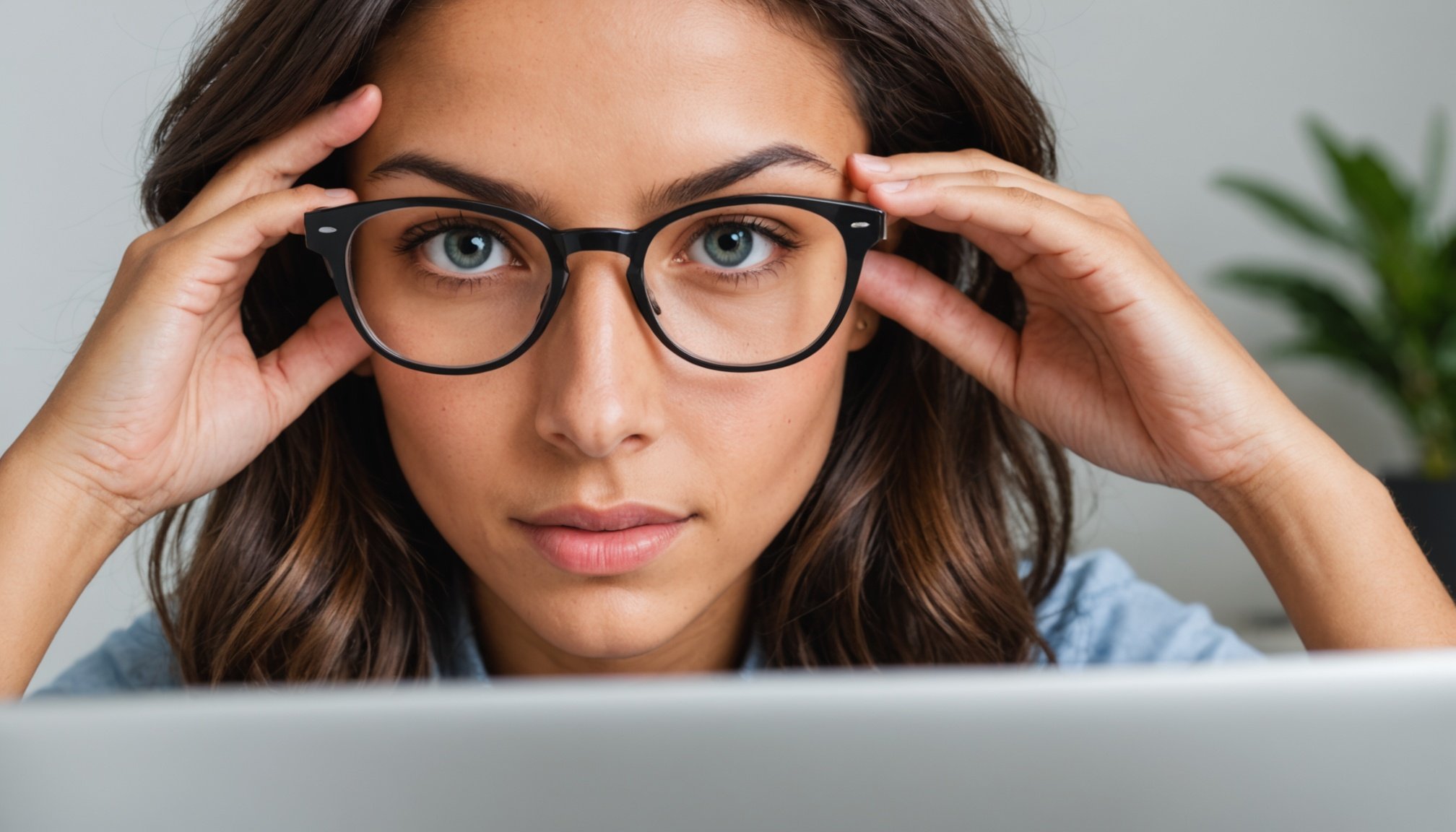Effective Strategies to Reduce Screen Time
To effectively manage screen time reduction, it is crucial to set specific time limits on device usage. By establishing boundaries, such as no more than two hours of recreational screen time per day, you’ll enhance your digital wellbeing with a clear structure.
Incorporating digital wellbeing tools can further assist in this endeavor. Many devices and apps offer settings that allow you to track and manage the amount of time spent on screens. These features can send reminders or even lock certain apps once the daily limit is reached. Utilizing these tools ensures a more automated approach to controlling device usage, relieving much of the onus on willpower alone.
Topic to read : Ultimate Guide to the Toughest Fabrics for Women”s Activewear: Discover Long-Lasting Durability
Furthermore, making lifestyle changes by creating a structured schedule dedicated to offline activities can substantially reduce screen reliance. Allocate specific time slots for activities like reading, exercising, or simply enjoying nature. This practice encourages a healthy balance between digital and real-life interactions.
An effective strategy also involves engaging in hobbies that naturally minimize screen exposure. Activities like arts and crafts, nature walks, or face-to-face social gatherings offer fulfilling alternatives to digital engagement. As these become regular parts of your routine, you might find that reducing screen time becomes more manageable than initially anticipated.
Topic to read : Finding the Perfect Exfoliation Routine for Sensitive Skin: How Often Should You Do It?
Incorporating Breaks into Your Routine
Incorporating regular breaks into your routine is essential for developing healthy habits and alleviating eye strain. Taking breaks doesn’t mean reducing productivity; rather, it enhances focus and maintains energy levels throughout your day.
Benefits of Regular Breaks
Regular breaks help prevent eye strain, particularly for those frequently using digital devices. Prolonged screen exposure can lead to discomfort, fatigue, and blurred vision. By stepping away from screens periodically, you allow your eyes to rest and recover.
Implementing the Pomodoro Technique
The Pomodoro Technique, a time management method, effectively incorporates breaks into work routines. It involves focused work sessions of 25 minutes followed by a 5-minute break. This cycle helps maintain productivity while preventing eye strain. By breaking tasks into manageable chunks, it encourages regular pauses to rejuvenate both mind and body.
Simple Reminders and Tools
To ensure you take frequent breaks, use simple reminders or tools. Alarms on digital devices or dedicated apps can nudge you to pause and stretch or refocus. Some apps are specifically designed to monitor screen time and suggest timely breaks, promoting healthier work habits. Integrating these tools into daily life enhances physical, mental well-being and sustains productivity.
Understanding the 20-20-20 Rule
The 20-20-20 rule is a simple guideline designed to improve visual health and reduce eye strain caused by prolonged screen use. It recommends taking a 20-second break every 20 minutes to look at something 20 feet away. This short break allows eye muscles to relax and prevents fatigue.
Integrating eye exercises into these breaks can enhance the benefits of the 20-20-20 rule. For instance, consider the “pencil push-up” exercise, where you focus on a pencil as you move it closer and farther from your nose. This exercise strengthens eye alignment and coordination. Alternatively, try blinking slowly multiple times to maintain optimal eye moisture.
Adhering consistently to the 20-20-20 rule offers long-term benefits for visual health. By routinely relaxing the eyes, individuals reduce the risk of developing conditions associated with digital eye strain, such as dryness, headaches, and blurred vision. Over time, these practices can contribute to healthier vision and fewer visual discomforts.
Understanding the importance of the 20-20-20 rule, along with incorporating eye exercises, encourages individuals to develop healthier screen habits. By prioritizing visual health, the likelihood of continued eye discomfort diminishes, offering lasting relief and optimal visual functioning.
Eye Exercises for Relief and Strengthening
In an era where digital devices dominate our lives, eye exercises have emerged as a simple yet powerful tool for vision improvement and eye wellness. Understanding the right exercises can significantly reduce the strain from prolonged screen time.
Different types of eye exercises target various issues. To reduce digital fatigue, one popular routine is the 20-20-20 rule. Every 20 minutes, look at something 20 feet away for 20 seconds. This helps relax your eye muscles, reducing fatigue and strain. Another exercise involves blinking rapidly for a few seconds to moisten and refresh your eyes naturally, alleviating dryness and tension.
Eye exercises can also enhance focus. For improved concentration, try the pencil push-up technique. Hold a pencil at arm’s length and slowly move it toward your nose while maintaining focus on the tip. This exercise helps strengthen the eye muscles, promoting better focus.
Incorporating these exercises into your daily routine is uncomplicated. Set reminders to practice every couple of hours during your work or study sessions. These routines can be a refreshing break and can lead to notable enhancements in your eye health. By adopting these strategies, individuals can enjoy both short-term relief and long-term benefits, making eye exercises an essential part of modern living.
The Role of Protective Eyewear
With the rise of digital screens in our daily lives, understanding blue light and its effects on our eye health has become crucial. Blue light, emitted by screens such as phones, tablets, and computers, can cause eye strain and disrupt sleep patterns. Prolonged exposure can potentially lead to long-term eye damage. Hence, eye protection through the use of blue light glasses is more relevant than ever.
Understanding Blue Light and Its Impact
Blue light is a part of the visible light spectrum with a short wavelength and high energy, making it potentially more harmful to our eyes than other light types. Increased screen time can lead to digital eye strain, headaches, and fatigue.
Benefits of Using Protective Eyewear
Protective lenses designed to filter blue light can significantly alleviate eye strain. By blocking or absorbing blue light, these glasses help reduce discomfort and improve screen time quality. This is particularly helpful for those who spend long hours in front of screens, either for work or leisure.
Recommendations for Selecting Blue Light Glasses
When selecting effective blue light glasses, consider:
- Lens quality and the percentage of blue light they block
- Comfort and fit for prolonged wear
- Style compatibility with your daily activities
By choosing the right protective lenses, you can minimise eye strain and enhance your digital experience.
Lifestyle Changes to Enhance Eye Health
To preserve and enhance eye health, it’s essential to incorporate strategic lifestyle changes, primarily focusing on nutrition, sleep, and hydration.
A balanced diet abundant in eye-friendly nutrients is crucial. These include vitamins A, C, E, zinc, and omega-3 fatty acids. Foods like leafy greens, carrots, eggs, nuts, and fish can significantly contribute to maintaining and improving vision. Such nutrient-rich diets can slow the progression of age-related eye diseases, offering a protective barrier against environmental damage.
Another key factor is quality sleep. Achieving a proper sleep cycle allows your eyes to rest, aiding in cell repair and regeneration. Sleep deprivation can result in eye strain, dryness, and even blurred vision, highlighting the importance of a restful night’s sleep for vision health.
Lastly, maintaining hydration is essential for overall well-being and eye comfort. Dehydration can lead to dry eyes, irritation, and blurred vision. Aim for at least 8-10 glasses of water daily. Additionally, consider using a humidifier in dry environments to prevent moisture loss from the eyes.
These lifestyle modifications not only support sustained eye function but also promote overall health, encouraging you to adopt these habits for lasting benefits.
Expert Advice and Research Findings
When it comes to preserving eye health, expert tips from eye health professionals are invaluable. One crucial insight is the 20-20-20 rule: every 20 minutes spent on screens, take a break to look at something 20 feet away for at least 20 seconds. This practice helps mitigate eye strain and is supported by numerous studies. Furthermore, professionals suggest adjusting screen brightness to match room lighting and maintaining a comfortable distance from screens.
Recent studies offer a deeper understanding of screen time’s effects on vision. Researchers have found that prolonged exposure to screens can lead to digital eye strain, characterized by symptoms such as dry eyes, headaches, and blurred vision. Moreover, blue light emitted by screens is a concern for circadian rhythms and sleep quality.
For readers eager to explore more about these issues, several resources come highly recommended. The American Academy of Ophthalmology provides comprehensive guides and updates on eye health research. Additionally, institutions like the Vision Council frequently publish reports and insights on managing screen time effectively.
By integrating professional guidance and utilizing available resources, individuals can make informed decisions to safeguard their eye health in our screen-dominated world.













